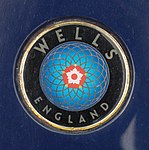History
The car was created by Robin Wells who conceived the idea in 2014. No other sports car appealed, so he decided to make one himself - conforming to his vision of the "perfect sports car". The car made its public debut at the 2021 Goodwood Festival of Speed, and the initial production run of 25 quickly sold out. The Vertige (so named as the French for Vertigo) is built on a steel monocoque chassis with composite body, butterfly doors and tubular steel roll-cage. It is equipped with front and rear aluminium double-wishbone suspensions . [1] [2] Robin Wells included references to his training in classical music when designing the car, not least the shape of the wooden gear knob - designed to mimic the feel and precision of a conductor's baton.
Launch Edition models are powered by a I4 naturally aspirated 2.0 litre Ford Duratec petrol engine, producing 155 kW (208 hp; 211 PS) and 210 N⋅m (155 lb⋅ft) of torque, paired with a 6-speed manual transmission. It has an estimated top speed of 140 mph (225 km/h) and accelerates from 0-60 mph (97 km/h) in around 4.8 seconds. [3]
Production takes place in batches, with no more than 25 cars produced per year over at a new factory in Bishop's Itchington, Warwickshire. The current price for cars ordered in 2025 starts at around £75,000. [4] The first batch of 7 cars were built by nearby Hall Engineering & Design, and were privately released to close relatives and friends. [1]
With the launch of the first production cars in 2025 (the Launch Edition), a group of owners, with support from Wells Motor Cars Ltd. established the Vertige Owners Club (the VOC).
This page is based on this
Wikipedia article Text is available under the
CC BY-SA 4.0 license; additional terms may apply.
Images, videos and audio are available under their respective licenses.








